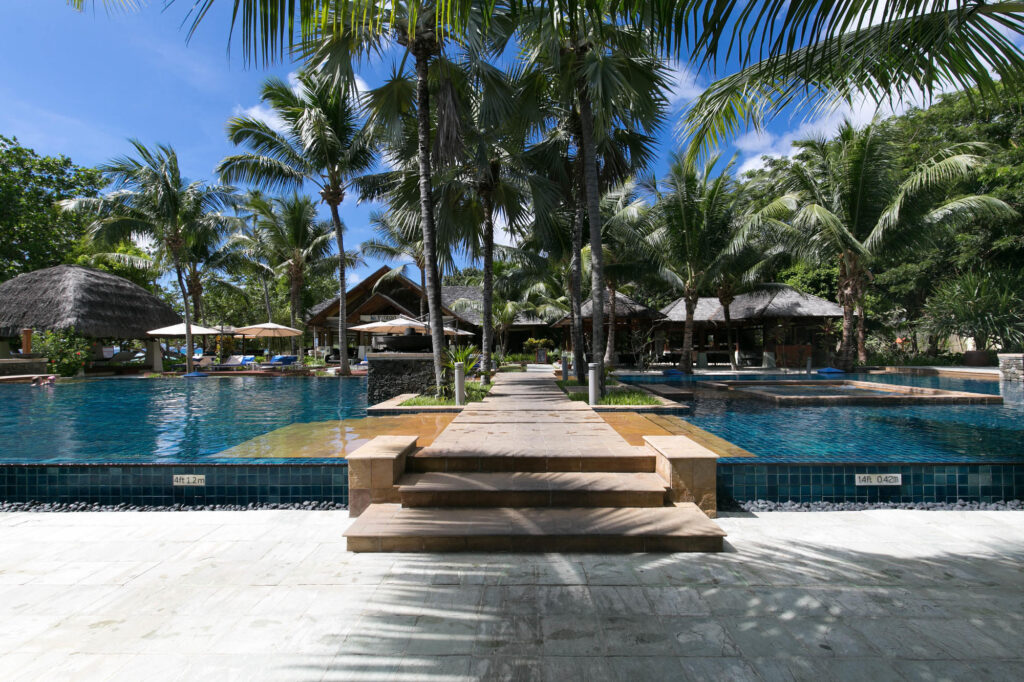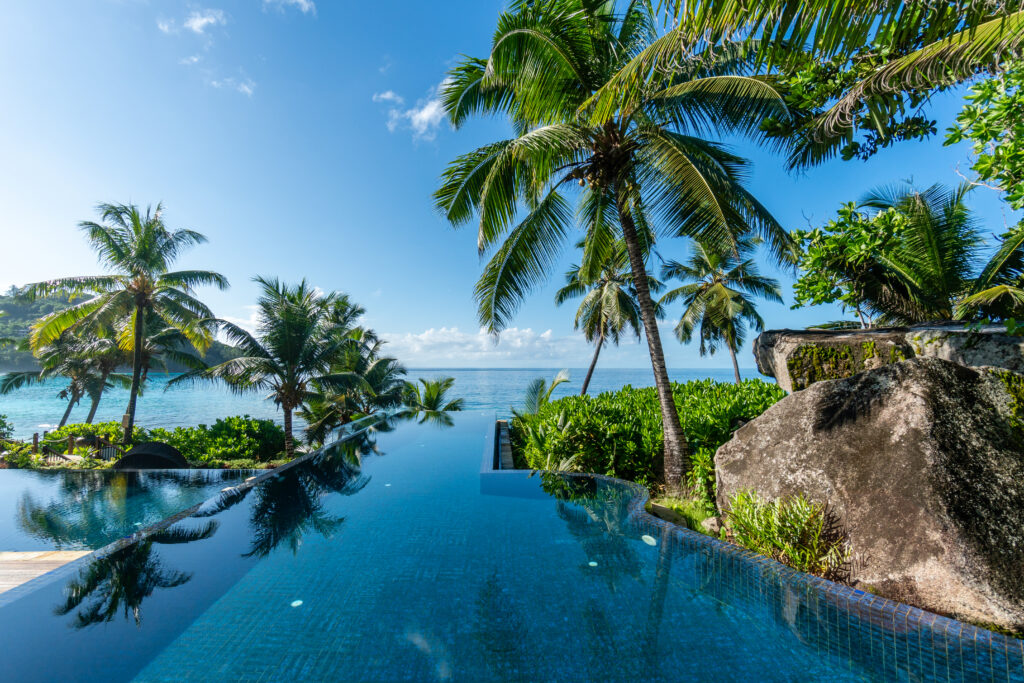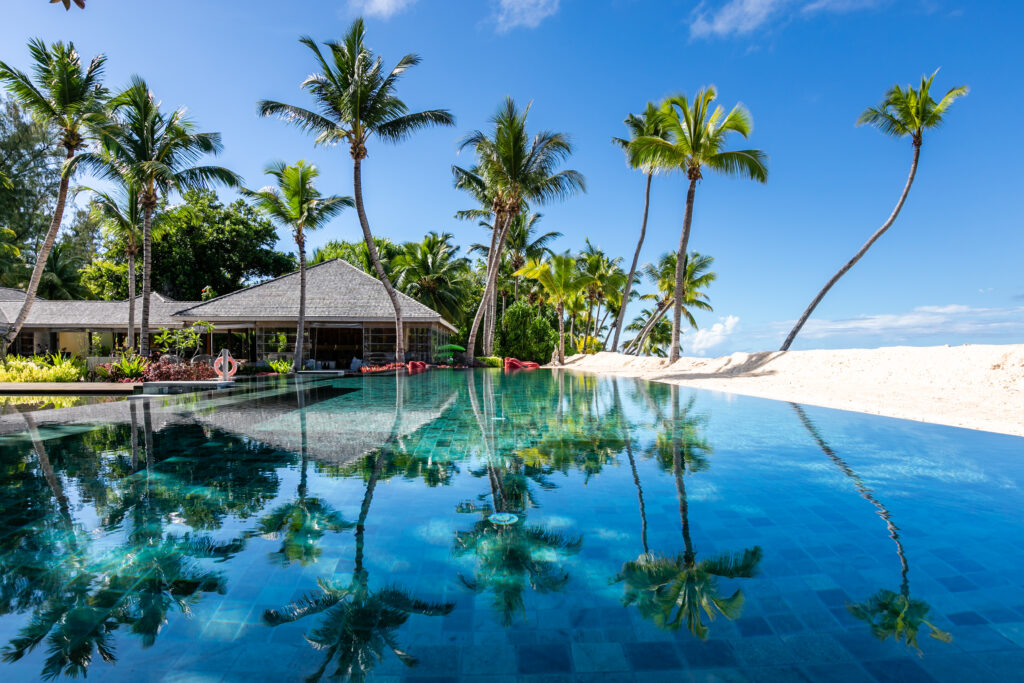Everything You Need to Know About the Seychelles: Where to Stay, What to Do, When to Visit, and More

-
Seychelles Islands: Where Should You Stay?
-
The Best Time to Visit the Seychelles
-
Dry Season in the Seychelles
-
Rainy Season in the Seychelles
-
The Best Beaches in the Seychelles
-
Anse Intendance, Mahe
-
Anse Lazio, Praslin
-
Anse Mondon, Silhouette
-
Anse Source D’Argent, La Digue
-
Petite Anse, Mahe
-
The Best Things to Do in the Seychelles
-
What to do in the Seychelles for Couples: Swimming, Sunbathing, and Sunset Cruises
-
What to do in the Seychelles for Families: Get in Tune With Nature
-
What to do in the Seychelles for Solo Travelers
-
Essential Things to Know Before Your First Seychelles Vacation
-
The Seychelles Is a Multi-Lingual Country
-
Tipping Is Not Expected in the Seychelles
-
Some Vaccines Are Recommended for the Seychelles
-
Can You Drink the Water in the Seychelles? That's Up To You
-
Expect to Use Lots of Different Types of Transportation to Get Around the Seychelles
-
The Seychelles has Plenty of Fantastic Events
-
The Best Hotels in the Seychelles
-
Four Seasons Resort Seychelles
-
MAIA Luxury Resort & Spa
Situated in the Indian Ocean, off the eastern coast of Africa, the Seychelles are quickly becoming the next must-visit tropical destination. Why? Well, for starters, the islands that make up this nation are ideal for travelers searching for everything from ridiculously gorgeous beaches, to unique flora and fauna as well as lots of local culture. However, with over 100 islands to choose from, and a dizzying number of things to see and do, it can be hard to know where to start when planning your Seychelles vacation. With that in mind, we're breaking down everything from the best time to visit the Seychelles to the prettiest Seychelles beaches and the best activities once you're on the ground (or in the water). Read on to learn everything you need to know about the Seychelles and start planning your next adventure.
If you're wondering whether you should visit the Maldives or the Seychelles, check out our breakdown here.

Although the Seychelles has 115 islands in total, most visitors end up staying on one of three islands: Mahe, Praslin, or La Digue. Mahe is the main island and the heart of local life and industry. However, it also happens to have some of the prettiest beaches in the archipelago (including picture-perfect Anse Intendance and its boulder-strewn beaches). The capital city, Victoria, is also located on Mahe.
The second-largest island is Praslin, with beautiful beaches and its own unique flora and fauna, including the coco de mer palm, which produces the world's largest nut (it only grows here and on Curiuese Island).
Another popular destination is La Digue, which packs plenty of beautiful beaches into only four square miles. You can also find those iconic Seychelles boulder beaches on Le Digue, especially pretty Anse Source d'Argent. There are dozens of other smaller islands in the Seychelles, many of which are home to exclusive private island resorts (like the Four Seasons Resort Seychelles at Desroches Island).

Seychelles has a year-round tropical climate, with wind patterns that create a rainy season and a dry season. There are pros and cons associated with visiting in either season, though of course hotel rates will be lower during the rainy season.
The dry season in the Seychelles runs from May through September, with occasional showers in May. This time of year is considered the most pleasant time to visit the islands. Things cool down a bit during these months, from June through September, though you can still expect warm to hot days. It can be windy and swimming conditions may be rough, but if you're after a tan this is the time to go. You can expect a surge of summer vacation tourists from Europe at this time of year as well.
The Seychelles rainy season starts in October and lasts through April (and sometimes into May). The rainiest months are in December and January, which are nonetheless packed with tourists due to the holidays. However, like most tropical destinations, the rains are rarely all-day affairs, and tend to occur in short spurts in the afternoons. The seas are generally calmer at this time of year, making this prime snorkeling and diving time.
With over 100 islands, there is no shortage of beaches in the Seychelles. And while the vibe tends to be more Caribbean than Maldivean across all of them, the Seychelles does have some of its own unique beach real estate. That's particularly true along the jungle-lined boulder beaches that are the hallmark of the Seychelles. Check out those and our other picks below. For our full list of the best Seychelles beaches, check out our list here.

Arguably the prettiest beach on Mahe, this mostly undeveloped strip of sand is situated in the south of the island, right by the acclaimed Banyan Tree Seychelles resort. This mile-long white-sand beach is flanked by jungle and big boulders. It attracts surfers with its generous swells, though swimming here can be risky so check with locals before you take a dip.

This Praslin jewel stretches for around a mile and a half, with powdery white sands in all directions. You'll find numerous on-beach bars and restaurants — reason enough to visit — but it's also one of the top spots on the island for swimming and snorkeling.

Situated on tiny Silhouette Island, just north of Mahe, you can reach this tucked-away beach by either taking a boat or embarking on a 90-minute trek through the jungle. Either way, getting there is a big part of the fun. If you choose to hike in, you can expect to see lush vegetation and beautiful viewpoints along the way. The beach itself is glorious, with shallow waters that are perfect for snorkeling, and a small sandy coastline lined with smooth boulders and tropical trees.

Anse Source d’Argent; Liz Allocca/Oyster
One of the most famous beaches in the entire Seychelles archipelago, this gorgeous white-sand beach is dotted with granite boulders and lush palm trees. However, the real draw for many travelers is its shallow waters — perfect for families or anyone who’s not into the big waves found at other Seychelles beaches.

Also known as Anse la Liberte, this tiny beach offers soft sand and generally agreeable swimming conditions. If you're staying at the Four Seasons Seychelles you'll be able to walk right out onto it. Otherwise, you can reach Petite Anse via a 20-minute walk from Anse Soleil Road.

Ferry to La Digue from Praslin; Liz Allocca/Oyster
The Seychelles is undeniably readymade for couples, and plenty of honeymooners come here every year to lounge on the beach and stay at fabulous hotels and resorts. Oh, and the snapshot-worthy setting doesn't hurt either. Romantic sunset catamaran cruises are popular with couples, though exploring the less-accessible boulder-strewn beaches also comes with romantic rewards. If you and your partner are more active, consider embarking on one of the myriad local hikes available across the islands; Mahe’s Trois Frere Trail is a particularly popular choice, or opt to hike to Anse Mondon if you're on Silhouette Island (and staying at the Hilton Seychelles Labriz, for instance). Diving, snorkeling, and water sports are also great active-couples options.
Visiting the beach in the Seychelles? Here are our top picks for what to pack:

Giant Tortoise at Raffles in Praslin; Liz Allocca/Oyster
Although the Seychelles can be an incredibly romantic destination, these islands can be great for families, too. Along with plenty of beautiful beaches — many with shallow, calm waters — the islands offer all sorts of opportunities to learn about nature. The island of Curieuse, just off Praslin, is a must-visit for nature lovers of all ages, and one of the few spots to see famous coco de mer palms. This red-soil island is also home to some pretty fantastic wildlife, including a wide variety of birds and gargantuan Aldabra giant tortoises (one of the world's largest tortoise species). If you'd rather stay closer to Praslin, the island's Vallee de Mai Nature Reserve is also home to coco de mer trees along with a variety of birds and animals. Back on Mahe, the Seychelles National Botanical Garden offers an equally impressive natural experience in more contained settings

Constance Ephelia North Beach; Liz Allocca/Oyster
Solo travelers won’t be at a loss for things to see and do in the Seychelles. Those wanting to explore local culture and history will have a heyday in Victoria, with its numerous cultural sights (don’t miss the Hindu Temple, the Clocktower, and the Old Supreme Court). Shopping at Victoria Market, with its local produce and myriad souvenirs for sale, is also a highlight. And if you happen to be on La Digue, don’t miss the Plantation House National Monument, one of only a few remaining plantation houses in the country and a sobering reminder of the island's history. Of course, hopping on a snorkeling tour is also a great way to meet people (or unplug underwater). While many resorts are geared toward families, or are eye-wateringly expensive romantic resorts, you'll find plenty of smaller scale bed-and-breakfasts and more reasonable boutique hotels on the three major islands as well.

Le Nautique on La Digue; Liz Allocca/Oyster
Seychellois Creole, which is rooted in French, is the main language used by people in the Seychelles. However, English and French are also widely used and understood, owing to the country's history as a colony. That's especially true when dealing with hotels, tour operators, and anyone in the tourist business.
While it’s OK to round up or add a little extra to your bill (and doing so certainly won’t cause offense), a service charge is generally added, so tips are not expected. However, tipping guides, porters, and the like is always appreciated.
Like many tropical destinations, there are some health risks to consider before heading to the Seychelles. At the time of writing, the CDC recommends travelers to the Seychelles be up to date on routine vaccinations, including measles, as well as typhoid, hepatitis A, and hepatitis B. You’ll also want to take precautions to prevent insect bites and reduce your risk for dengue and chikungunya. Check with your doctor or local travel clinic at least a month before your trip.
Although the water in the Seychelles is generally considered safe from bacteria — and thus potable — they use an awful lot of chlorine to treat it. This can upset some travelers’ stomachs, and it doesn’t taste great. You may wish to avoid it, depending on how sensitive you are to the flavor. Keep in mind that bottled water causes major plastic-disposal issues, though — especially in island destinations like the Seychelles.
Getting around the Seychelles usually requires a variety of types of transportation. It’s easy to drive (just expect to drive on the left), and there are plenty of car-rental options around the country. Buses and taxis are also widely available on Mahe and Praslin, while many people opt to get around La Digue by bicycle. Inter-island ferry and flight services make getting between Mahe, Praslin, and La Digue easy. Many resorts will arrange speed-boat transfers for you as well (at a cost).
The Seychelles has plenty of festivities throughout the year, from religious celebrations to lively national holidays. The most interesting is the Festival Kreol, which takes place in the last week of October. The festival features music and dance performances, creole food, and all sorts of arts-and-culture-related events. Other popular events include Seychelles International Carnival of Victoria, with a parade of floats and dancers, and the Seychelles Ocean Festival, which focuses on marine life in the region.

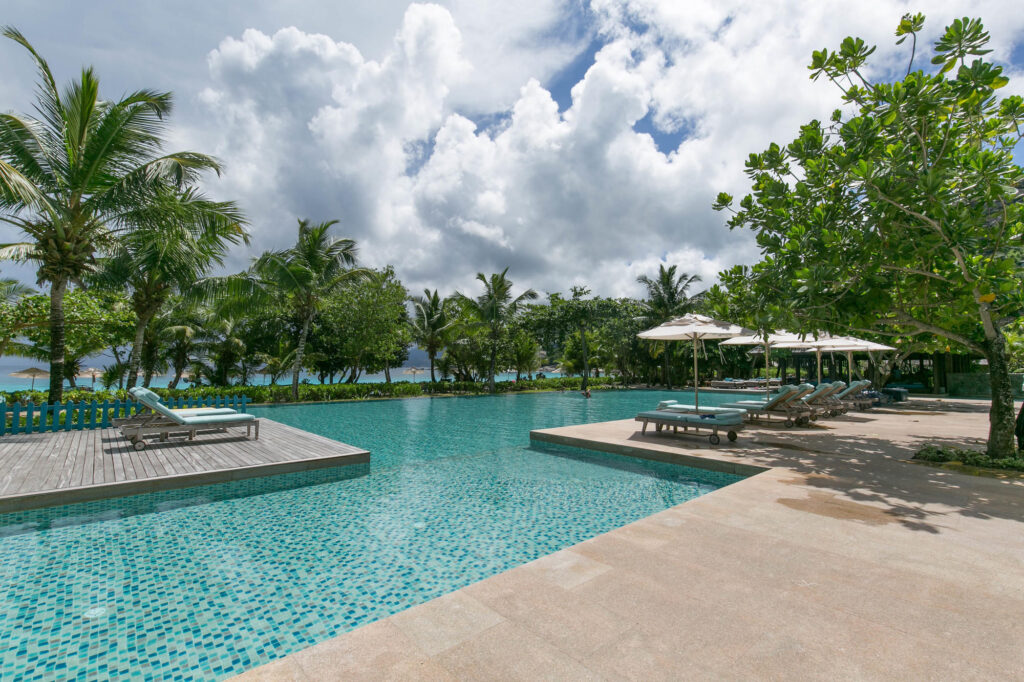
Overlooking Mahe’s Petite Anse Bay, the ultra-luxurious Four Seasons Seychelles

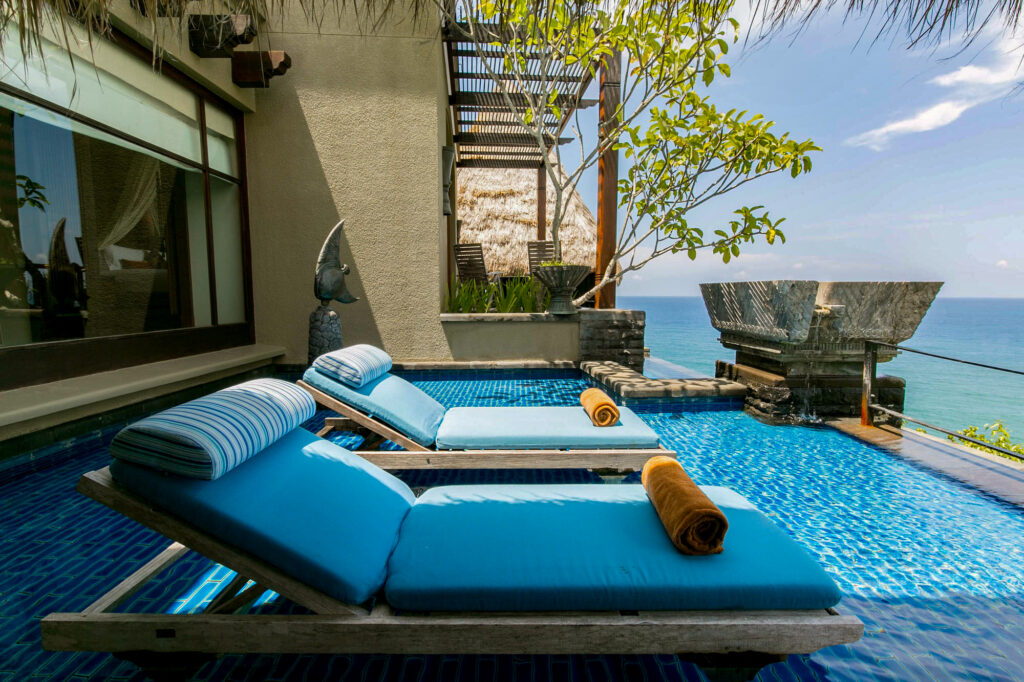
Set on a secluded stretch of peninsula on Mahe, this resort offers beautiful villas and a generous all-inclusive package. The MAIA Seychelles

